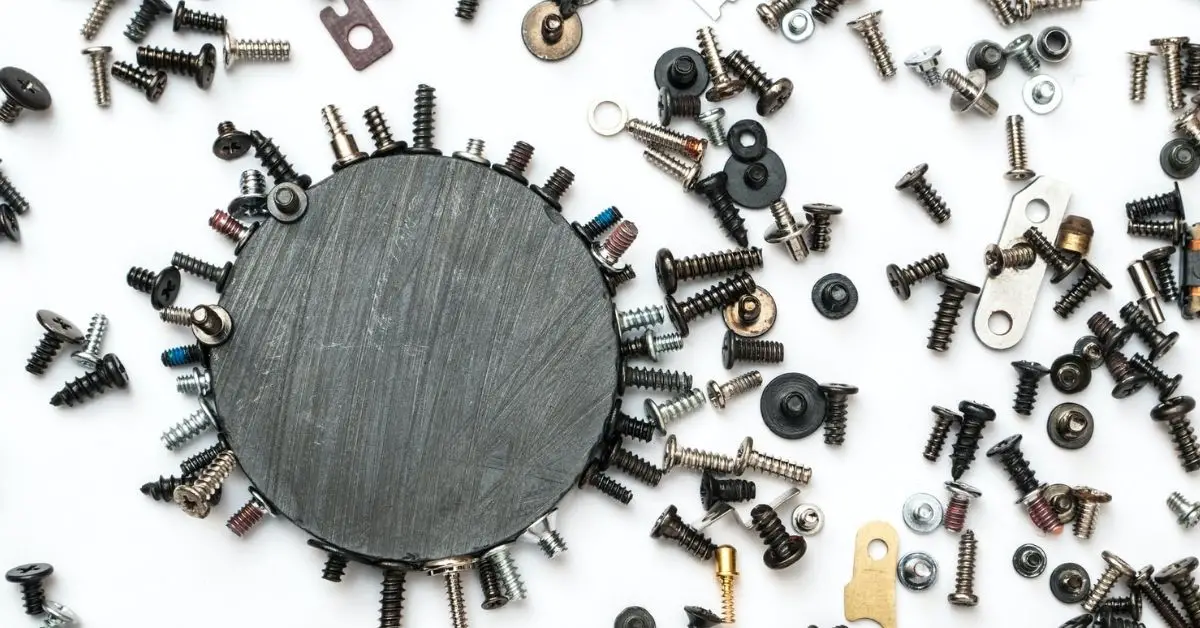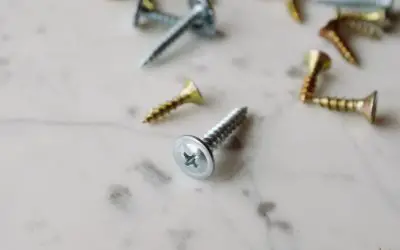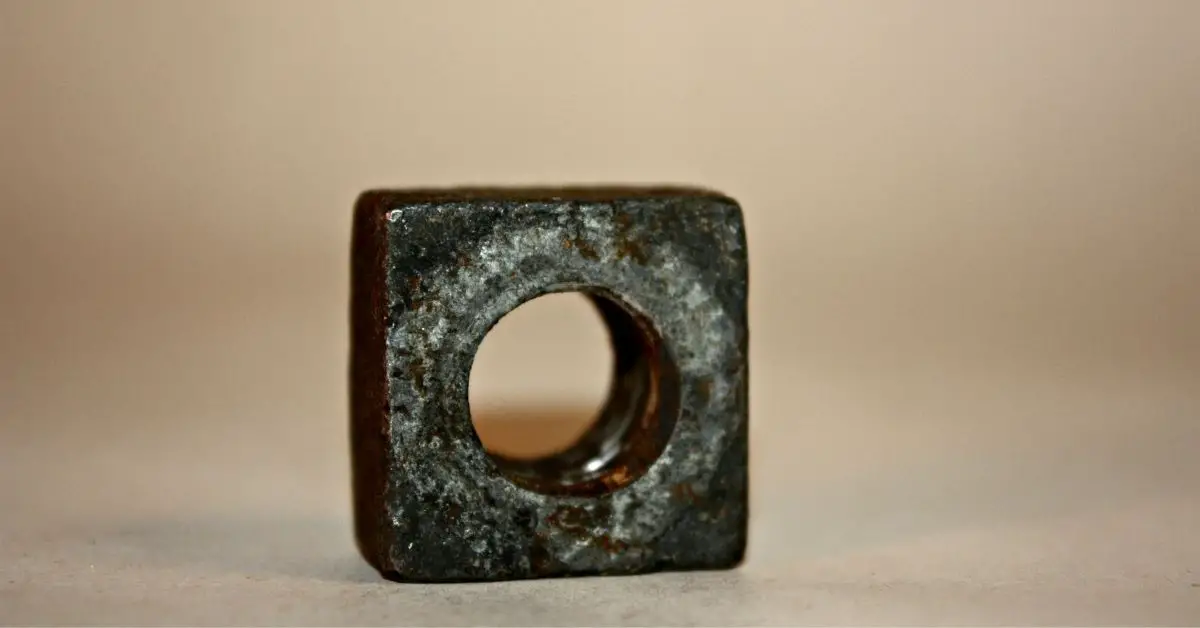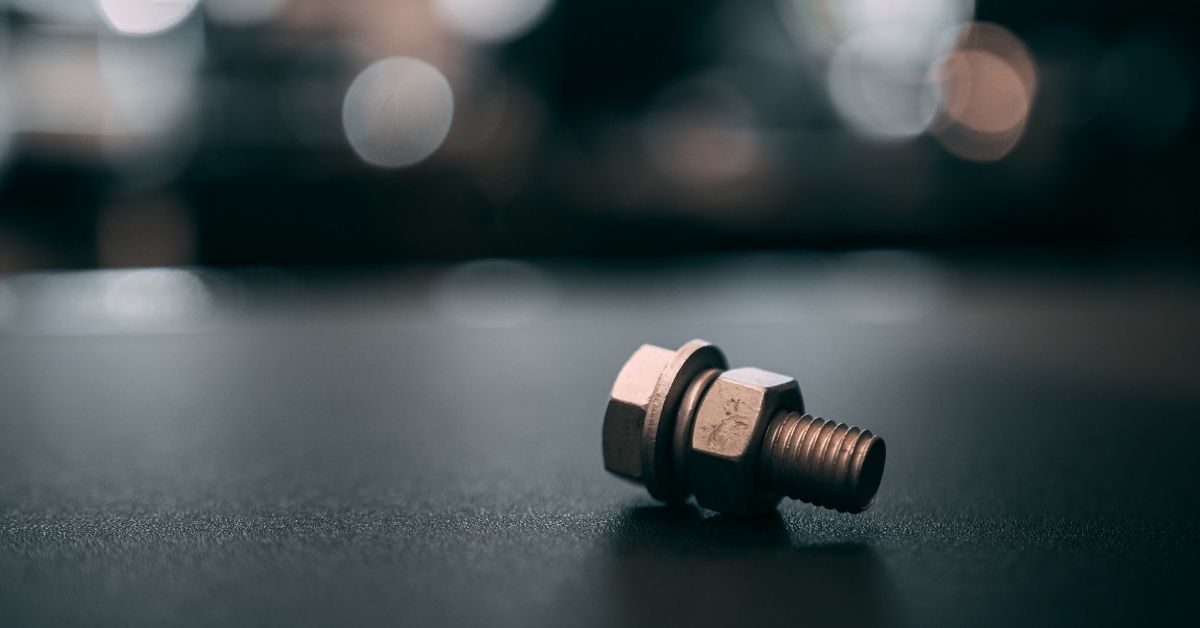Share

Bolts, nuts, and washers-these three small parts can make a huge impact on your home. Understanding the differences between these three parts is important for any homeowner because they are used in so many applications around the house.
Knowing what each part does and how it works will help you understand why certain bolts, nuts, and washers work better than others depending on their specific use. So let’s take a look at the most common types of bolts, nuts, and washers found around the house!
What Are The Difference Between Bolts, Nuts And Washer?
Bolts are used to fasten two or more objects together. They are cylindrical in shape and have a head-on one end, while the other end has threads to be screwed into nuts. Nuts a cylindrical-shaped fastener with a hole to thread bolts through them.
Washers are round thin metal or plastic plates with an outer diameter slightly larger than the bolt and nut they are meant for. They serve as spacers between surfaces that need to be held apart at some distance from each other.
Uses Of Bolts, Nuts And Washers
Here are the different uses of bolts, nuts, and washers:
Bolts
This is one of the most common types used in household projects like hanging clothes racks, curtains rods, etcetera. You can even use it to hang cabinets or shelves on walls which require support because they must be stable before placing heavy-weight items on them!
Other purposes include connecting pieces of furniture together with metal leg braces so that their stability increases at least for a longer period. They can even be used during construction work but you should hire experts if you have no idea about how to do it properly.
Nuts
This type is useful while making wooden tables by adding legs under them as well as tightening locks into doors too! They can also be used when making cabinets or shelves by screwing them into walls.
Washer
The main purpose of this type is to provide extra support and protection between the head of a bolt as well as its hole on surfaces so that it doesn’t get damaged easily, which means you’ll need less maintenance work for sure!
Washers are usually made from metals, but some brands even offer rubber washers, too so make sure you check their material before buying them because metal ones aren’t good enough if they come in contact with water frequently due to corrosion issues, ultimately damaging your items more than helping your cause.
There are different types available, including split lock washers, spring steel washers, etcetera. You consider all options carefully while choosing materials for their strength and durability only.
Types Of Bolts, Nuts And Washer
There are many different types of bolts and nuts that are used for various purposes in homes. It is important to understand the different types, so homeowners know which type they need when they go out into the market looking at hardware options.
Types Of Bolts
1. Square Head Bolts
Squarehead bolts are commonly used to bolt wood together. They are most often seen in the construction of furniture or any kind of wooden structure that needs to be put together. This type of bolt is also useful for attaching metal sheeting because it can allow for adjustments as needed until everything fits properly.
2. Machine Bolts
A machine bolt has a hexagonal head and requires another piece, called a nut, which sits on top of it so it will turn with ease when tightening or loosening them with an Allen wrench. These types of bolts are usually found where there’s machinery working inside buildings like factories or warehouses; they attach parts like gears and pulleys onto rotating shafts.
3. Lag Bolts
These types are also known as carriage bolts, these types have flat heads designed to sit flush against whatever surface they’re attached to. The most common use of these types of bolts is for connecting joists and rafters, but they can also be used as an alternative to machine bolts in some cases where a hexagonal head doesn’t fit properly on the material being bolted together.
4. Toggle Bolts
These types have holes along their length so that once you hammer them into place, one end will expand and suck itself snugly inside the wall’s studs or another solid backing behind it. Like lag bolts, toggle anchors are useful when attaching heavy items like cabinets onto walls without having to worry about putting too many screws into places that aren’t strong enough.
5. Flange Bolts
Flange bolts are most often used for structural support with materials like concrete and masonry. They’re also sometimes called anchor bolts. The end of the bolt is welded onto a metal plate that’s attached to whatever needs extra strength, so it can handle heavy loads without bending or breaking apart.
6. Anchor Bolts
These types are usually used to attach metal objects or materials to concrete, brick, stone, and masonry walls. They have a loop on the top of them so they can be easily attached with chain hoists, which is useful for heavy construction equipment that needs extra support when being lifted into place.
7. Hanger Bolt
A hanger bolt is a screw that has a loop on top and threads below it. This design means they can be used as both bolts or screws for hanging things like shelves, cabinets and other kinds of hardware onto walls without causing damage to the wall’s surface.
8. T-head Bolt
This type of bolt is usually used in areas where the surface it’s attached to needs more protection from people and objects that might bump into it. It has a larger head than most bolts, so once it’s screwed on, no one will be able to see what’s underneath unless they’re looking really closely at the wall or other material you’ve secured with this type of screw.
9. Stud Bolts
Stud bolts have a thread that runs all the way through them so they can be screwed into wall studs. This type of bolt is most often used to secure heavy objects like cabinets, shelves, and entertainment centers onto walls without putting too many holes in things you don’t want to be ruined by screws.
10. U-Bolt
A u-bolt is a type of anchor bolt that has a U shape. They’re useful for attaching items to concrete or brick walls, and can also be used as an alternative to machine bolts in some cases where the material being fastened together doesn’t have enough room on top of it for a nut.
11. Plow Bolt
If you need to install a rack or other type of equipment that requires doing it from the bottom, plow bolts are an excellent choice because they can be installed through metal and wood with relative ease. Once everything is set in place, you’ll have a sturdy way to secure heavy items without worrying about anything falling off unexpectedly.
12. Rawl Bolt
These types of bolts are mostly used for installing shelves onto masonry walls where there isn’t any kind of stud behind them to provide support. They’re also sometimes called wall anchors. In order for these types of screws to work properly, make sure their length lines up with whatever material needs fastening before using an Allen wrench to drive them down into the surface as far as they’ll go.
13. Sex Bolt
A sex bolt is a threadless fastener that has at least one nut on each end. It can be tightened to force two pieces of wood together, for example.
14. Hex Bolt
A hex bolt has a male thread on both ends, making it easy to attach two pieces of material in different ways. It’s also sometimes referred to as an acorn fastener. This type is usually used for outdoor applications because they’re weather-resistant and corrosion-proof. A lot of variations exist when it comes to this style of the fastener, so be sure you know what kind you need before buying them at the hardware store or other place where they’re sold.
15. Eye Bolt
An eye bolt consists of one piece that goes through whatever object needs securing, then loops back around itself so there are holes all along its length. These types can be useful for hanging things like tools up with chains rather than putting more permanent-looking screws in your walls that might cause damage when you want to take them down.
Types Of Nuts
17. Slotted Nut
A slotted nut is a type of fastener that has two prongs, one on each side. They’re not as secure as other types because they can be unscrewed with relative ease if there’s enough room for something to fit between the slots.
18. Wing Nut
This kind of nut, also called an acorn nut, looks like it belongs on your car rather than in your home, but don’t let its appearance fool you; these are usually very strong and will stay securely attached until someone decides to take them off themselves by hand or uses tools to remove them carefully. Wingnuts should only be used where they won’t get bumped around too much since their structure isn’t designed for repeated use.
19. Hex Nut
A hex nut has six sides. These nuts work well with a hex bolt and can be used in conjunction to ensure your fastener doesn’t come undone when you need it the most.
20. Square Nut
A square nut has four sides. These types of nuts are used in conjunction with a bolt or screw that’s equally as strong because they don’t offer much security on their own but can be difficult to remove if you need to replace them at some point down the road.
21. Hex Jam Nut
This type is similar to hex nuts, except it doesn’t have an unthreaded segment between its ends where something could get stuck and prevent removal. They’re useful for when you want someone else who isn’t familiar with your setup around later so there won’t be any confusion about whether or not these particular fasteners should come loose under normal use.
22. Wheel Nut
The threads on this type of nut are often much thicker than other kinds so they can keep a car wheel securely fastened to the axle. It’s important to ensure these types of nuts don’t come undone while you’re driving in wet weather or your vehicle will be in danger.
23. Flange Nuts
This fastener has a smooth exterior that’s entirely flat. They’re often used on bicycles to keep wheels secure without making it too easy for someone who doesn’t know what they’re doing to remove them while you’re using your bike.
24. Self-Locking Nut
A self-locking nut is tightened with the wrench or tool by hand, then locks into place when pressure is applied beyond its breaking point so there isn’t any concern about it coming loose after installation. It may need some extra elbow grease in order to come undone later if necessary. This type of nut is usually made out of either metal or plastic and can be useful for keeping things like furniture legs from falling off their bases over time.
25. Coupling Nut
This type of fastener is used to join two pieces together, either temporarily or permanently. These types of nuts work well with a washer and have internal threads so they can keep whatever it is you’re working on attached to another component without being too noticeable. You may find one that’s pre-installed if you buy something like a bicycle for your kids where safety matters most.
26. Eye Nut
An eye nut has nothing but an empty hole in the middle. They’re useful when attaching wire because no protrusions from the exterior could get caught up in anything else as part of their design. The name comes from how metal wires would be threaded through these holes back when electricity started becoming popular at homes around the world.
27. Dome Nut
This type of nut is dome-shaped on the outside, which makes it easy to grip by hand. It’s designed so that a wrench or tool can’t accidentally slip off of one and cause any damage. This kind works best with items like furniture legs where you don’t want someone to be able to remove them without knowing how right away.
28. Knurled Nut
A knurled nut has a series of ridges on the outside to make gripping them easier. They’re often used as part of a threaded connection that’s designed for people who don’t own or use wrenches very much. Knurling is meant to provide more grip, but it can also wear down over time and could become loose if these types of nuts are used with bolts that aren’t compatible in size.
29. Cup Washer
A cup washer is used in conjunction with a hex nut in order to provide extra protection against corrosion. This type of fastener has an inner diameter the same size as the bolt so it’s meant to fit snugly up against one side while another component, like a screw, fits securely into place on top. Stainless-steel varieties are often used when working with items that could be exposed to high levels of moisture or salt, which can cause rust.
30. Ring Nut
A ring nut is one that has a round, metal band instead of any ridges or grooves like other kinds. They’re often used for securing the top and bottom halves of something together where it’s important to be able to tighten them by hand without anything else. Ring nuts are usually found on items with rounded surfaces so you can’t tell they’ve been installed until someone looks closer at what you’ve done.
Types Of Washer
31. Flat Washer
Flat washers are often made out of metal and have a smooth, flat surface with an outer diameter that’s slightly larger than the size of the bolt.
This type is most useful when you need to distribute pressure or weight evenly throughout something since they sit between two surfaces instead of directly underneath one like other types. These washers work best for securing furniture legs without having them stick too far up off of your flooring, but can also be used on bolts as part of their design if there’s enough space under what you’re working on so it doesn’t slip around later.
32. Star Washer
A star washer has sides that come together in five points at its center hole, making it easy to grip by hand. This kind is most commonly used in places where the bolt needs to turn a certain way, but it’s tough for someone who doesn’t own or use wrenches regularly. These types of washers are especially useful when installing things like water faucets that require multiple rotations over time.
33. Lock Washers
A lock washer has bumps all along its outside edge which help hold it in place once installed on a bolt. They’re often made out of metal and have an outer diameter similar to flat washers so they can distribute pressure evenly throughout whatever you’re working with.
A keyhole shape comes from their name since this type of fastener also includes small cutouts at each point where they meet together in order to keep them from rubbing and causing damage over time.
34. Beveled Washer
A beveled washer is designed with a series of ridges along its outside edge, which makes it easy to grip by hand. It’s most useful when you need to make sure that the bolt head and nut securely tighten together at specific angles.
This type doesn’t actually sit flat against whatever surface you’re working with but instead comes up slightly above one side so there’s no risk of slipping while someone turns the wrench or applies pressure later on. Beveled washers work best in places where something needs to stay put even if whoever has installed it removes their hands from the object while they continue tightening things down.
35. Plain Washer
A plain washer has a smooth, flat surface and an outer diameter that fits perfectly over the bolt. While it’s not ideal to use these types of fasteners for things like furniture legs since they don’t distribute pressure evenly, they’re still useful when you need something simple in order to keep items from rubbing against one another.
36. Split Lock Washers
One design improvement on standard lock washers is called a split lock washer which features a small opening at each point where the points meet together.
This makes it easier to tighten down whatever you’re working with because there are no ridges or bumps along its surface. These have less risk of causing damage thanks to their unique shape so this kind works best if your project requires a high level of precision.
Buyers Guide: How To Choose The Best Bolts, Nuts And Wahers
Here are the things you should consider when buying bolts, nuts, and washers:
Material
This is the first thing you need to consider. You should buy bolts, nuts, and washers made of materials that are corrosion resistant because they will save your money in the future. For example, stainless steel can be used for outdoor use while zinc plated material is good enough if they are only used indoors.
The head type
There are different types of heads available when buying fasteners including hexagon-headed screws or self-tapping screws with slotted tips etcetera. There are even more options but here we’ll talk about these two types only as of the most commonly seen ones by homeowners during their DIY projects at home. So make sure that you choose a bolt with proper head fitting properly into your tool when working with it.
Size
The size of the bolt, nut, and washer you are going to buy should be chosen according to the diameter of screw thread they have. For example, if their diameters are different then obviously one is for a smaller-sized hole while another one can fit into a larger-sized hole so make sure that you order or purchase bolts in matching sizes only because otherwise there will be problems during installation which means wastage of money too.
Fits well
You must check whether these fasteners easily go inside holes without any problem at all before buying them because sometimes they may get stuck due to improper measurements resulting in time waste which ultimately increases cost also! So choose carefully after checking each detail carefully.
Price
Of course, you should consider the price too while buying bolts and nuts because if they are expensive, your budget will obviously be affected badly, which is not a good sign for sure! So choose wisely, so that it matches both your requirements as well as your pocket!
Bolts, nuts, and washers are an essential part of any home improvement project. They have a variety of different uses, and it is important to know which you will need for your specific task so that the project goes as smoothly as possible!



0 Comments